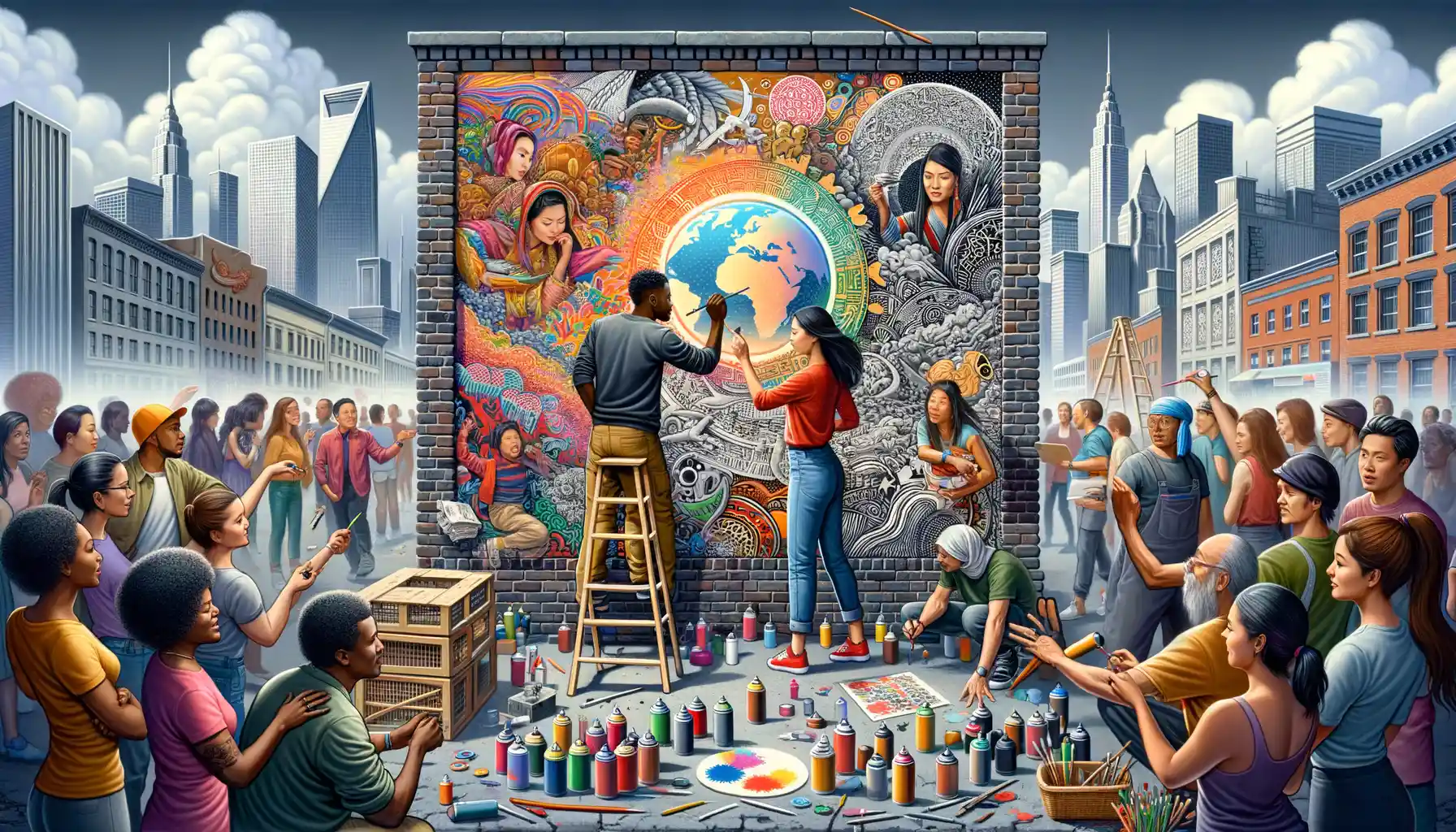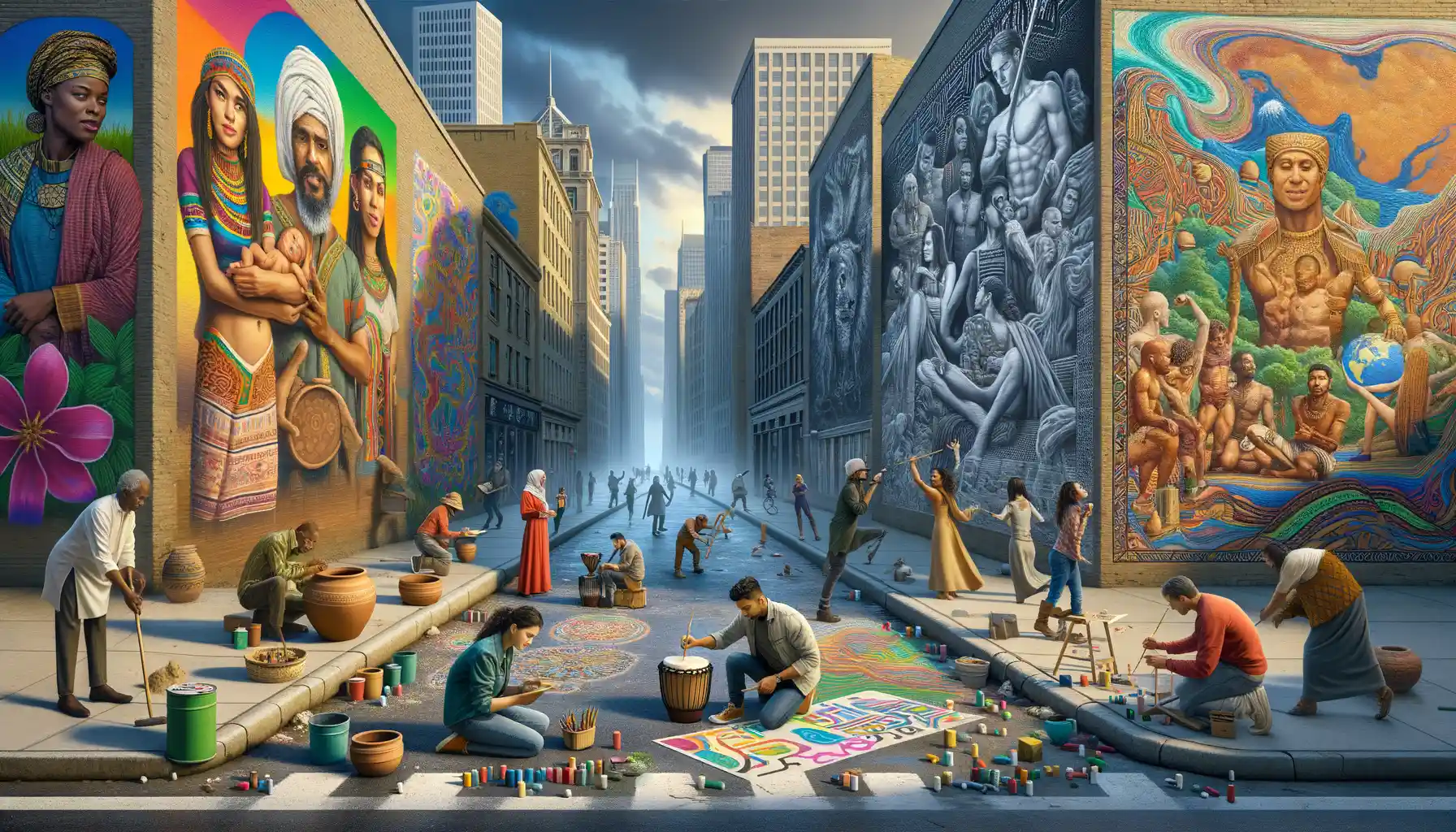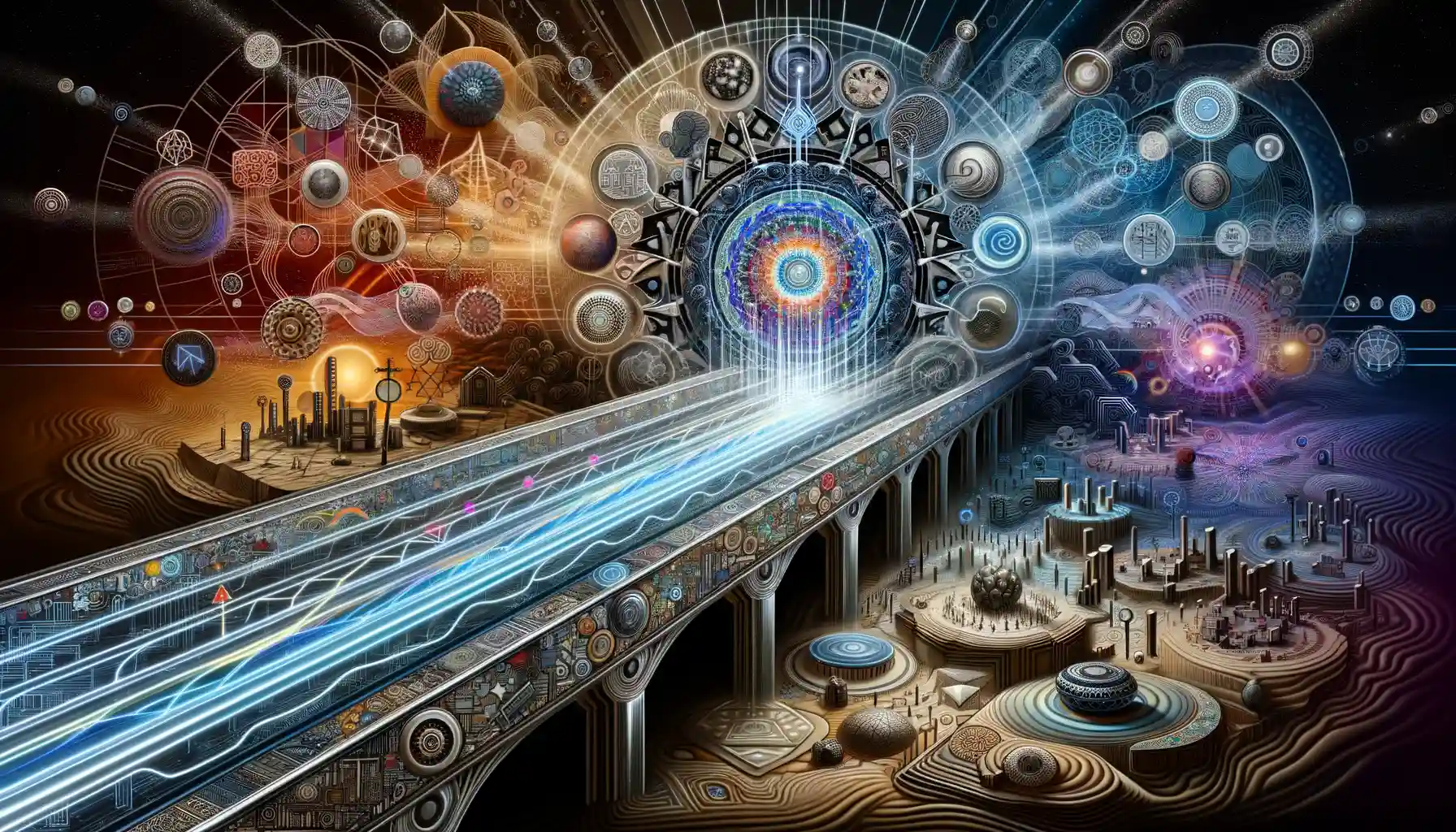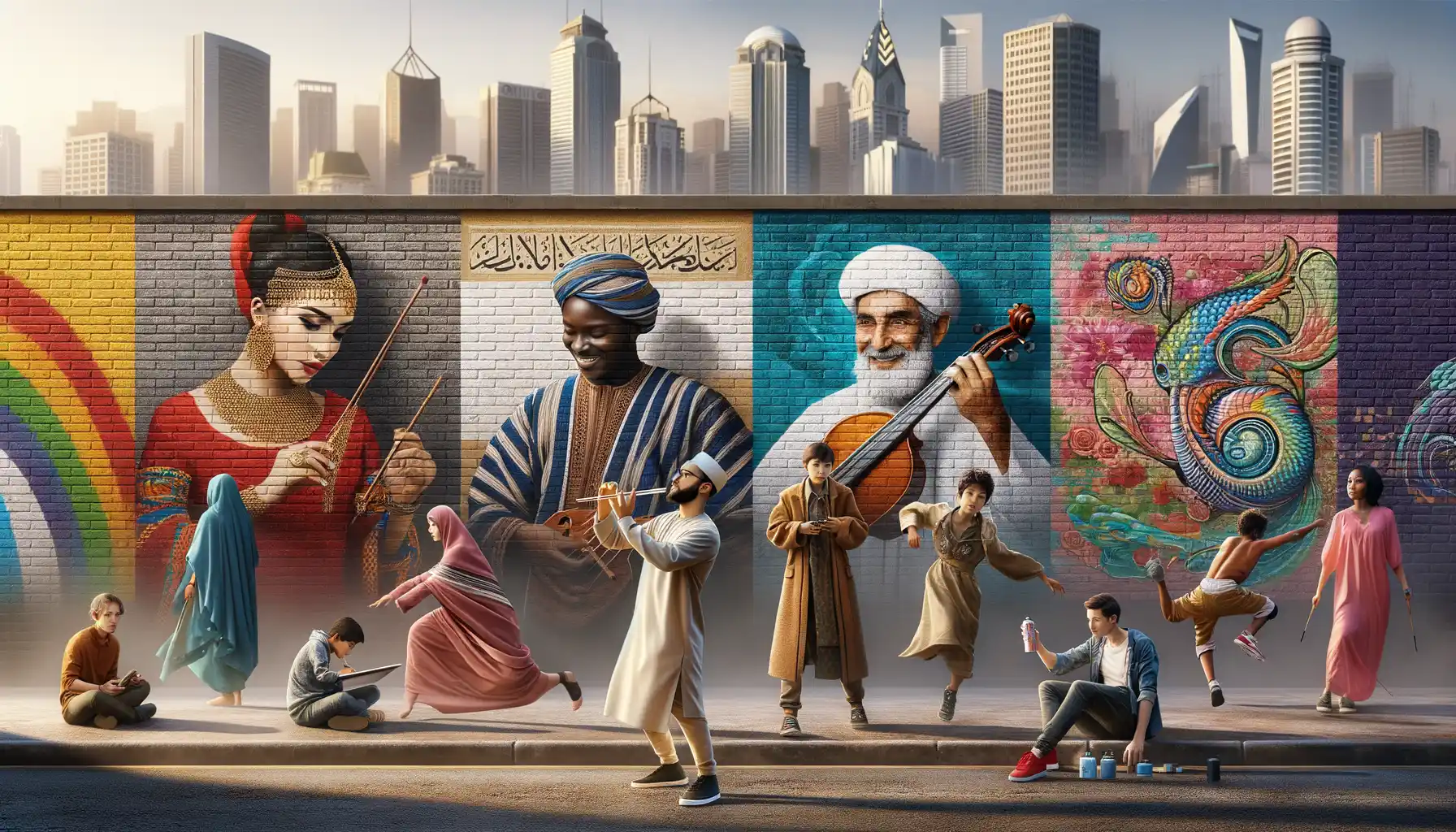How Globalization Fuels Artistic Innovation
The Vibrant Interplay of Cultures
Picture a canvas splashed with colors that seem to sing from every corner of the globe. That’s the magic of globalization in art. When a street mural in São Paulo whispers secrets of Japanese calligraphy or a gallery in Paris hums with the rhythm of African tribal patterns, you know something extraordinary is happening. Globalization isn’t just connecting economies; it’s creating a crossroads where artists meet, collide, and reinvent.
Take, for example, the explosive rise of urban art festivals like the Urban Nation Biennale in Berlin. Walk through its streets, and you’ll see Brazilian street art dancing alongside French abstract expressionism, while Australian and Indian influences weave tales on shared walls. Every stroke feels like a dialogue—a conversation so rich it makes words feel clumsy.
- A graffiti artist in Brooklyn might team up with a ceramicist from Oaxaca, blending gritty cityscapes with pre-Columbian motifs.
- Meanwhile, a DJ in Tokyo layers beats inspired by both local shamisen melodies and Jamaican dub.
This isn’t imitation—it’s innovation born of friction, curiosity, and boundless energy.
Breaking Boundaries Through Shared Tools
What happens when boundaries blur? Pure alchemy. Thanks to globalization, artists now share tools, materials, and philosophies once considered worlds apart. Think of how K-pop assimilates Western pop beats while championing traditional Korean aesthetics. Or consider the global spread of sustainable art movements—Thai artisans reworking discarded plastics into dazzling sculptures, and European creators following suit inspired by their vision.
The late great Jean-Michel Basquiat captured it perfectly: art thrives when it’s raw, messy, and open to the world. Today, even digital platforms act as an invisible hand, stitching together a quilt of influences. A creator uploads their work in Lagos, and overnight it inspires someone sketching in Lisbon. The result? Pieces that feel universal yet deeply personal.
Here’s the truth: globalization doesn’t dilute art—it electrifies it, giving birth to creations we never knew we needed but can’t imagine living without.
The Role of Cultural Exchange in Urban Art Development

Where Cultures Collide, Creativity Thrives
The heartbeat of urban art is its diversity. Walk through any bustling city and you’ll see it—not just murals but stories, cultures, voices painted against the gritty backdrop of concrete walls. What fuels this vibrancy? A global exchange of ideas. Urban art is no longer confined by borders; it thrives on cultural collisions, like spices blending into a rich, unexpected dish.
Take street art in Berlin, for example. You’ll spot influences from Latin American mural traditions, the rebellious edge of New York graffiti, and even Southeast Asian shadow play motifs. It’s a visual dialogue, where styles don’t just coexist—they evolve together.
- Murals inspired by Indigenous myths are layered with Japanese calligraphy.
- Stencil art nods to African textile patterns while narrating local struggles.
- You’ll find collaborations between South Korean artists and French collectives, creating something neither could have imagined alone.
If you think about it, urban art isn’t just about painting walls—it’s about breaking them down. Through shared experiences and cross-cultural projects, an artist gets to wear another’s lens, reimagining their world. And that’s magic, isn’t it?
Influence of Migration on City Art Narratives

When People Move, Stories Travel Too
Migration is like the heartbeat of urban art – it pumps fresh blood into the veins of a city’s creative ecosystem. When people move, they don’t just carry suitcases; they bring their stories, traditions, and dreams. These become colors and textures on the city’s ever-evolving canvas.
Take, for example, the vivid murals in London’s Brixton neighborhood, where Afro-Caribbean patterns meet gritty British street art. Or think about New York’s Lower East Side, where waves of Jewish, Puerto Rican, and Chinese immigrants have layered the streets with graffiti, mosaics, and intricate signage – each a chapter in the city’s collective story.
- A Syrian artist fleeing conflict might sketch freehand poetry on a Berlin wall, merging Arabic calligraphy with modernist trends.
- Meanwhile, a Mexican sculptor in Los Angeles may fuse Aztec motifs with Hollywood-style glam, creating something utterly unique.
Migration doesn’t erase boundaries; it blurs them, creating a kaleidoscope of emotions and aesthetics. Every piece of art forged from this cultural fusion whispers tales of homes left behind and new identities forged. These aren’t just artworks; they’re living, breathing testaments to human resilience and connection.
Technology as a Bridge in the Global Art Space

Breaking Down Borders with Digital Canvases
The digital age has done something remarkable for art: it has smashed the barriers of geography, allowing creators from Rio de Janeiro to Kuala Lumpur to collaborate as if they were sharing a studio. Technology isn’t just a tool; it’s the lifeblood of today’s global art space. Through platforms like Behance, Instagram, or even VR-based galleries, artists are no longer constrained by physical boundaries. A muralist in Bogotá might find inspiration in the brushstrokes of a Kyoto-based painter, while a Berlin DJ layers echoes of African rhythms into their techno beats—all thanks to this digital alchemy.
- Virtual reality (VR) turning exhibitions into boundless experiences.
- AI algorithms sparking creative partnerships between humans and machines.
- Blockchain ensuring fair credit for digital creators worldwide.
The Power of Connection in Creative Evolution
Technology doesn’t just transmit art; it amplifies voices and fosters relationships. Think of how live streams bring street art festivals, like Upfest in Bristol, directly to audiences on every continent. Or how crowdsourced projects allow fans to become co-creators, dissolving the line between artist and admirer. This is connection on a new level—raw, human, and exhilaratingly collaborative.
Even the tools themselves are art forms now. Digital tablets and coding languages are extensions of the artist’s hand, evolving the meaning of what a “brush” can be. Art isn’t just crossing borders anymore; it’s leaping over them, carried by pixels, passion, and the infinite possibilities of tech.
Future Trends in Culturally Diverse Urban Art

Reimagining Cityscapes: What’s Next for Urban Art?
The future of culturally diverse urban art feels like standing at the edge of a kaleidoscope—what you see keeps shifting, dazzling, and surprising. As the world grows even more interconnected, expect city walls to become canvases of untamed global expression.
Emerging artists are breaking free from traditional techniques and experimenting boldly. Think of murals that combine ancient Persian patterns with Afro-futuristic figures, or street installations using AI-generated cultural mashups. The future is about fusing identities, and each creation becomes a love letter to overlapping heritages.
- Eco-conscious materials are stealing the spotlight—think biodegradable paints or sculptures made of recycled denim, plastic, or even seaweed.
- Interactive technology is transforming sidewalks into ‘living art spaces,’ where murals sing traditional songs or AR apps reveal hidden layers of cultural storytelling.
Pushing Boundaries: Who’s Leading the Charge?
What’s fascinating is how artists from underrepresented communities are not just joining the conversation—they’re rewriting it. In Rio de Janeiro’s favelas, graffiti crews blend indigenous mythology with hip-hop culture. Similarly, migrant artists in Berlin are introducing motifs from home, creating vibrant dialogues between East and West.
This isn’t just art; it’s resistance, hope, identity. And urban art is no longer ‘underground.’ From pop-up exhibitions in subway stations to corporate towers commissioning colossal murals, the stage has expanded. Yet, the heartbeat remains raw and intimate—a reminder that art, like cities, thrives when borders blur.
